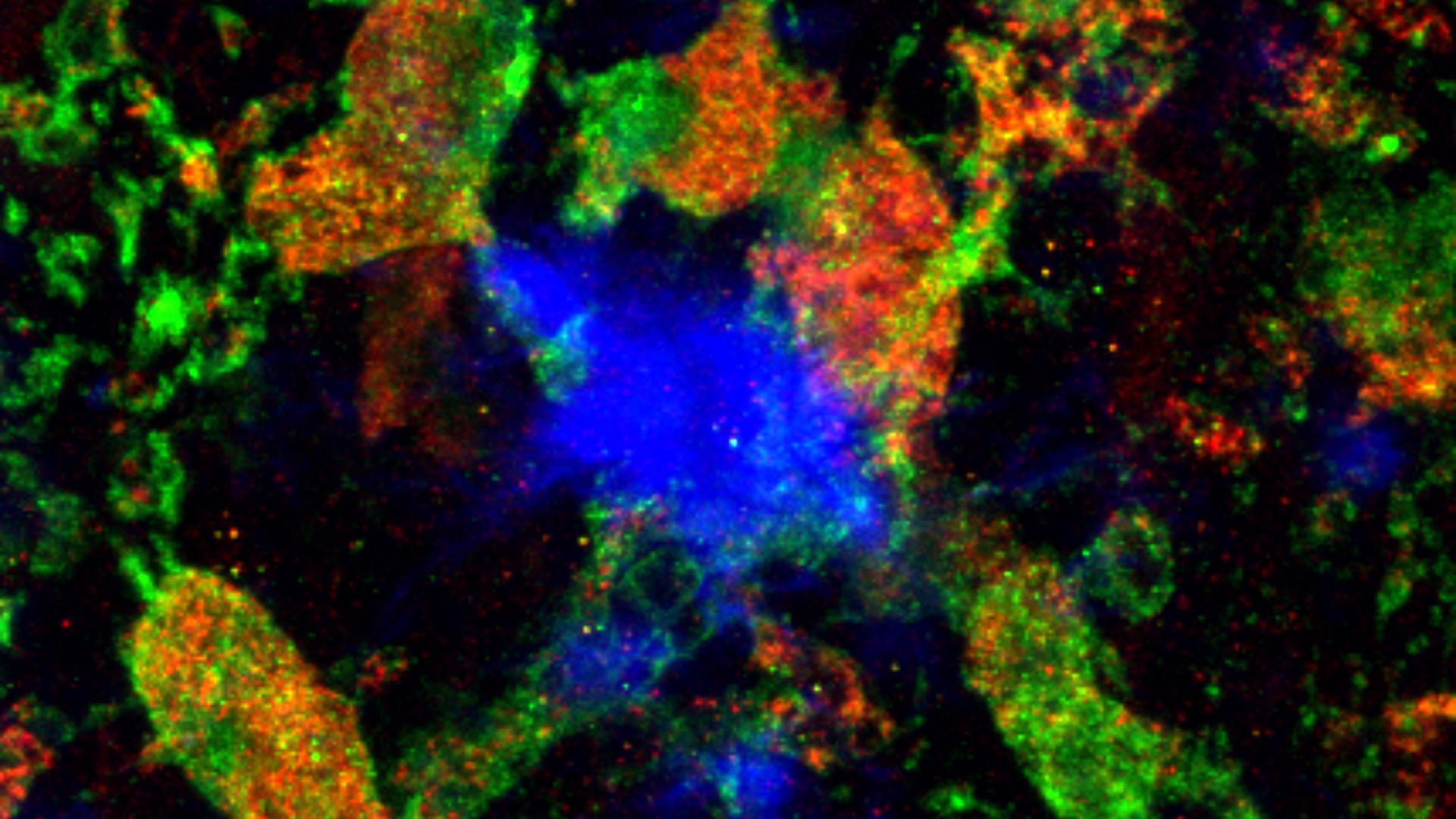New Evidence on How TREM2 Gene and Mutations Impact Alzheimer’s
Written By: BrightFocus Editorial Staff



Written By: BrightFocus Editorial Staff

What: The TREM2-R47H genetic mutation in microglia impairs lipid metabolism, resulting in a buildup of lipid droplets and reduced reactivity towards beta-amyloid plaques.
Where: Christel Claes, et al. Plaque-Associated Human Microglia Accumulate Lipid Droplets in a Chimeric Model of Alzheimer’s Disease, Molecular Neurodegeneration, 2021.
BrightFocus Connection: This project was supported by an Alzheimer’s Disease Research (ADR) Postdoctoral Fellowship grant to first author Christel Claes, PhD, while at the University of California Irvine. Senior author Mathew Blurton-Jones, PhD, was her mentor on the grant and was a speaker for the BrightFocus Alzheimer’s Disease Fast Track workshop.
Why it is Important: Brain immune cells, known as microglia, are involved in Alzheimer’s disease (AD), and the R47H coding mutation on the TREM2 gene (triggering receptor expressed on myeloid cells 2gene) is one of the strongest microglial-expressed risk factors, causing a three-fold increase in the development of late-onset AD, which is the most common type. This research, which helps explain how the TREM2-R47H genetic mutation contributes to the formation of beta-amyloid (Aβ) plaques, sheds light on how AD develops and opens the door to possible new Alzheimer’s treatments.
At a molecular level, TREM2 is involved in microglial lipid metabolism, ie, their ability to process lipids and possibly use them as an alternative energy source when facing challenges, such as a shortage of glucose (the main energy source) and/or the need to step up immune surveillance and response in the brain. TREM2 also plays a role in promoting microglia to envelop and compress beta-amyloid plaques. Having a TREM2-R47H gene mutation triples the risk of developing Alzheimer’s disease. However, few studies have looked at how the TREM2-R47H mutation impacts lipid metabolism and how it influences the progression of Alzheimer’s disease.
In the current study, the researchers transplanted healthy microglia and microglia with the TREM2-R47H gene variant, derived from induced pluripotent stem cells, to generate a chimeric mouse model where human microglia respond to Alzheimer’s pathology in mouse brain. At seven months, the team looked at how microglia carrying the TREM2-R47H mutation reacted to existing beta-amyloid plaques. They found that both types of microglia were metabolically challenged, resulting in a buildup of lipid droplets around beta-amyloid plaques.
The amount of lipid droplet build-up depended on how close microglia were to the beta-amyloid plaques. The transplanted microglia resembled “foam cells” similar to those seen in atherosclerosis. Atherosclerotic foam cells also accumulate lipid droplets and can secrete a lipid transport protein, known as apolipoprotein E (APOE). However, microglia with the TREM2-R47H mutation tended to have a lower lipid droplet accumulation because of an impaired response in detecting nearby plaques. Additionally, the TREM2-R47H mutation decreased expression of APOE and CD9, a protein associated with immune response. The researchers note that lipid droplet accumulation was also observed in plaque-associated microglia in autopsy studies of AD brains, which supports their findings and modeling approach. More work is needed to determine the precise ways in which TREM2 and its mutations interact with AD, but these findings contribute to a growing consensus about its importance and potential value in opening up new treatment avenues.
BrightFocus Foundation is a premier global nonprofit funder of research to defeat Alzheimer’s, macular degeneration, and glaucoma. Through its flagship research programs — Alzheimer’s Disease Research, Macular Degeneration Research, and National Glaucoma Research— the Foundation has awarded nearly $300 million in groundbreaking research funding over the past 51 years and shares the latest research findings, expert information, and resources to empower the millions impacted by these devastating diseases. Learn more at brightfocus.org.
Disclaimer: The information provided here is a public service of BrightFocus Foundation and is not intended to constitute medical advice. Please consult your physician for personalized medical, dietary, and/or exercise advice. Any medications or supplements should only be taken under medical supervision. BrightFocus Foundation does not endorse any medical products or therapies.
